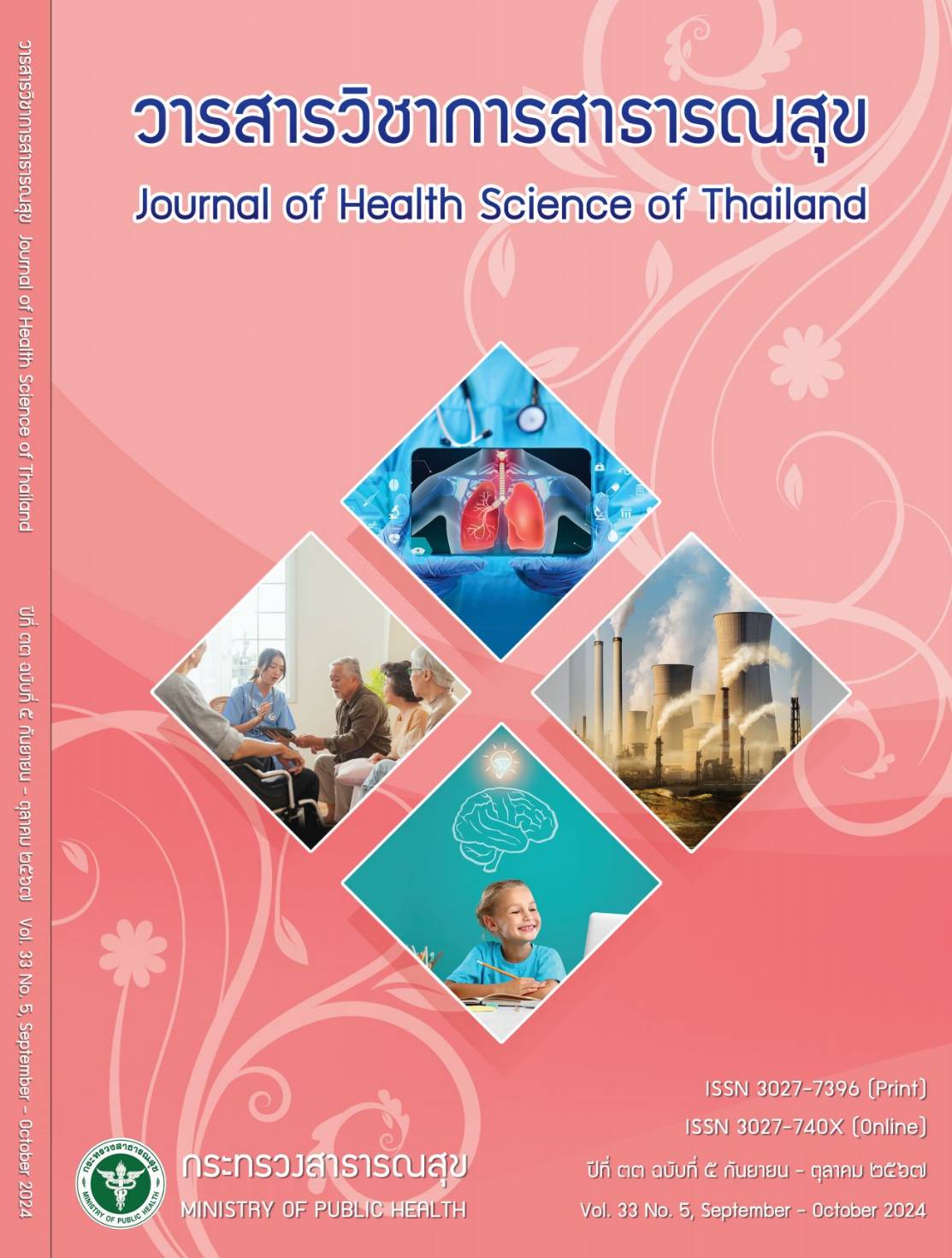Predicting Concentration of Air Pollution Using AERMOD Model and Estimating Its Health Impact on the Population Near Biomass Power Plants in Khon-Buri District, Nakhon Ratchasima Province
Keywords:
predicting, air pollution, AERMOD, health impact, biomass power plantsAbstract
Although biomass power plants play a role in enabling Thailand to produce electricity in response to
economic development, the potential issue of air pollution should not be overlooked. This study aimed
to predict the air pollution concentration from biomass power plants using the AERMOD air quality
modeling and assess its health impacts on the population residing within a 10-kilometer radius of the
plant in the Khon-Buri District of Nakhon Ratchasima Province. During the period from October 2019
to September 2020, air samples from four potentially affected communities within the radius were
analyzed. These communities were Subkanlueng Subdistrict health promoting hospital, Chorakhehin
Subdistrict health promoting hospital, Khon-Buri Tai Subdistrict municipality, and Ban-Clongyang
(Moonbon Ubpatum) School. The analysis results showed that the concentration of total suspended
particles (TSP), nitrogen dioxide (NO2), and sulfur dioxide (SO2) was lower than the national
ambient air pollution standard in all four locations. In terms of health impacts, the most prevalent symptoms
observed was fatigue (13.5%), followed by blurred vision (12.6%). The analysis of the relationship
between the pollutants and particulate matter with a diameter less than 2.5 micrometers (PM2.5) and
health symptoms using binary logistic regression revealed that only PM2.5 exposure was significantly
associated with multiple symptoms including nasal congestion, runny nose, burning nose, sore throat, dry
cough, cough with mucus, trouble breathing, headache, fatigue, burning and itchy eyes. For instance, an
increase of 1 microgram per cubic meter of PM2.5 was associated with a 1.01 times higher likelihood
of experiencing nasal congestion. In light of these results, the researchers recommend (1) the establishment
of an air pollution health risk assessment center that utilizes AERMOD model to monitor and
alert the public to the impact of air pollution, and (2) the development of database system linking health
and environmental factors for the use in proactive monitoring and warning of health disaster caused by
environmental pollution.
Downloads
Downloads
Published
How to Cite
Issue
Section
License

This work is licensed under a Creative Commons Attribution-NonCommercial-NoDerivatives 4.0 International License.







